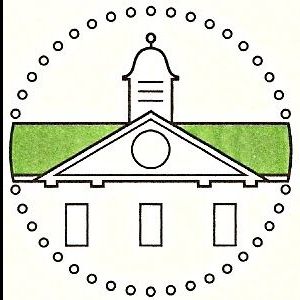News
Work starts on the fish pass
Work is now starting on the fish pass for the Darley Abbey weir. We reported early last year on the proposals which are now to become a reality. Julie Wozniczka of the Trent Rivers Trust will be on hand at the forthcoming AGM of the Darley Abbey Society (7.30 pm 18th April Village Hall) to answer questions about the scheme. The pass will be contructed through the Island between the two parts of the weir.
Background
The European Water Framework Directive requires member states to assess the ecological status of water bodies and to identify measures to ensure good status across the catchment. Extensive areas of the upper catchment of the Trent are failing this test in respect of fish populations.
The fish pass to the weir on the River Derwent at Darley Abbey is being promoted by the Trent Rivers Trust, with the support of the Environment Agency, as one of the measures being undertaken within the Trent catchment to facilitate the passage of migratory fish and so improve the ecological status of the Derwent.
The scheme has been designed to be as sustainable as possible and to minimise impacts on the environment, especially any visual intrusion in views of, and from, the Mill complex. That has led to the fish pass being located within a small island in the river rather than in the river itself as a modification to one of the weirs. This is in order to avoid a large new engineering structure in views across the world heritage site. It also reduces the impact on water quality during construction.
Several alternative location options were investigated but all had significantly greater visual impacts on the setting of the listed buildings. The details ate contained in the Feasibility report produced by WS Akins also appended to this application.
The Scheme
The pass is approximately 1.5 m deep and 2.4 m in width, plus the thickness of the side walls. It and will involve trenching to around 5 m width. ( see Fishtek drawings sheets 1-3 ). The pass will be dug into the ground with the sides finished at ground level. It will not be visible above the island except for the lowest section where it re-enters the river. This will be faced with reclaimed timbers or natural stone to blend in with the surroundings. The visualisation drawing illustrates the low visual impact of the proposed pass compared to conventional in-channel passes.
The up-stream entrance to the pass will involve the removal of a section of the retaining wall to the island. This wall will be reinstated to its original appearance above the pass after construction leaving a relatively small opening visible above the water level.
These measures ensure the lowest possible visual intrusion.
Planting scheme / Impact on vegetation
Trees will be affected through root damage for approx. 10 metres width along the line of the trench. Any trees that are lost will be replaced in suitable locations on the island through a landscaping scheme to be agreed with the planning authority.
Other improvements to the site
The opportunity has been taken to bring about improvements as part of the scheme. These are:
1. replacing the self-seeded sycamores and poplars that require felling to allow the pass to be built with more appropriate indigenous species as part of the landscaping strategy
2. exploring the scope for the creation of an otter hole as part of the engineering works on the island
3 interpretation / information about the fish pass including numbers of fish using it and possible video footage of the movements
4. improvements to the foot bridge providing access to the island for weir / fish pass maintenance
5. improvements to the fencing round the island replacing the current 'car park' railings with something more appropriate to the setting and location
Access
The site has no public access. It is owned by the Environment Agency which enjoys a private right of access via a foot bridge. The bridge has a demountable section to provide security of access. The bridge is proposed to be refurbished as part of the scheme.
Temporary access for construction works is being provided across Dean's Field.
